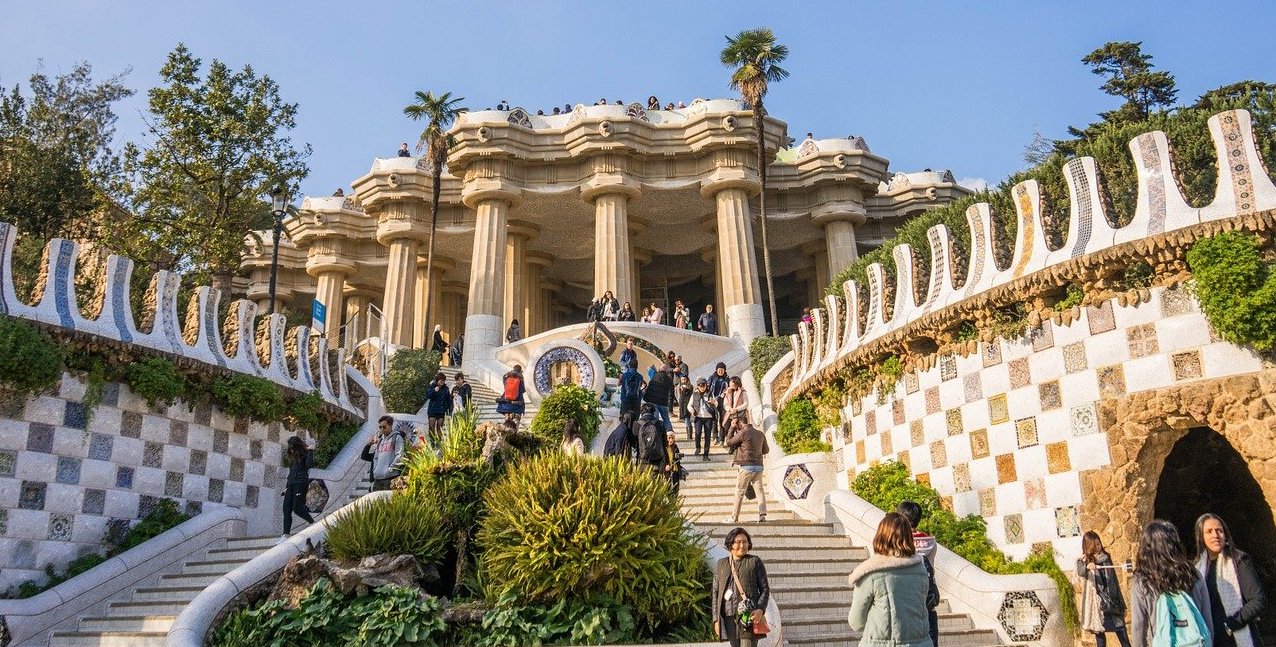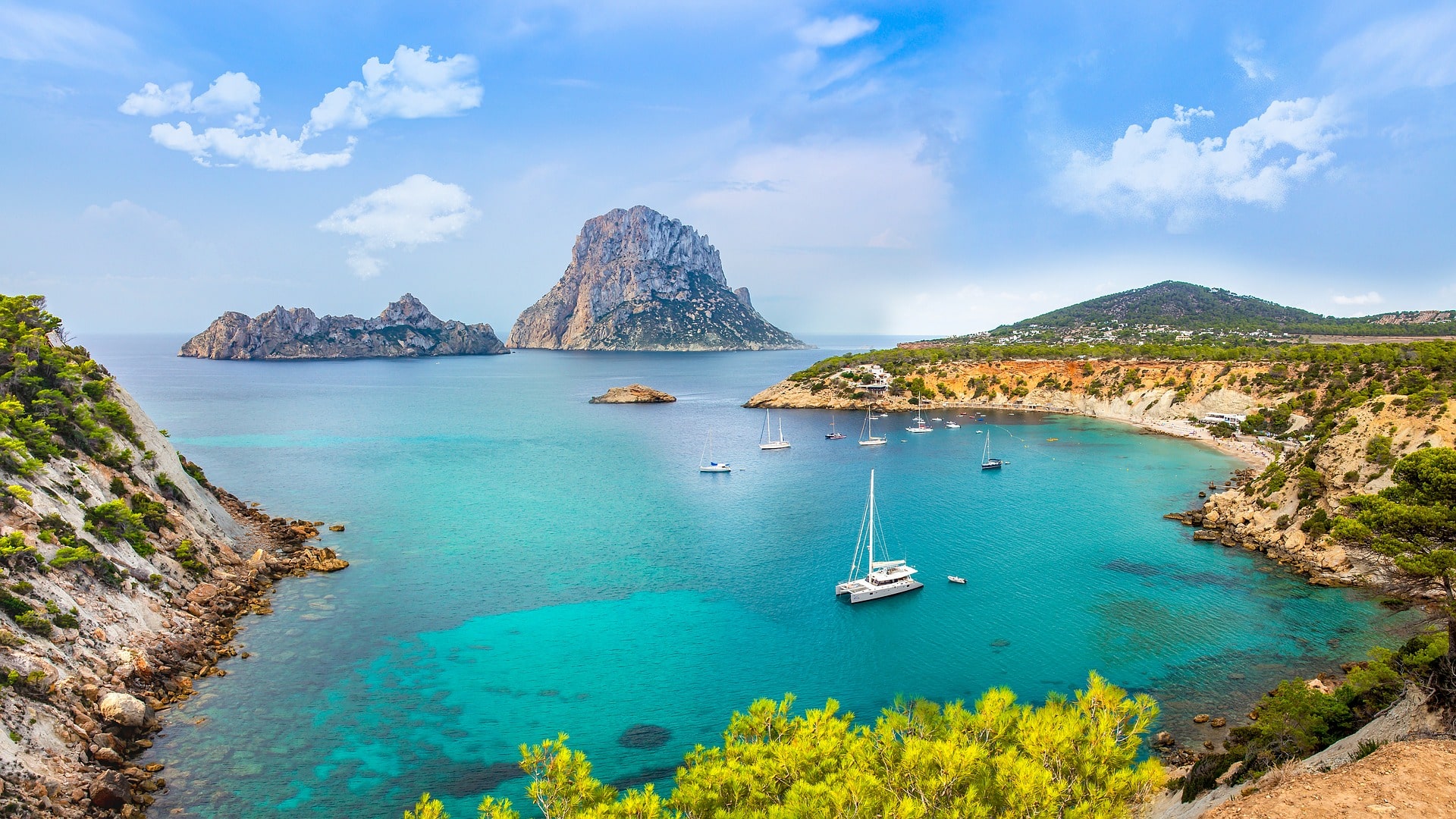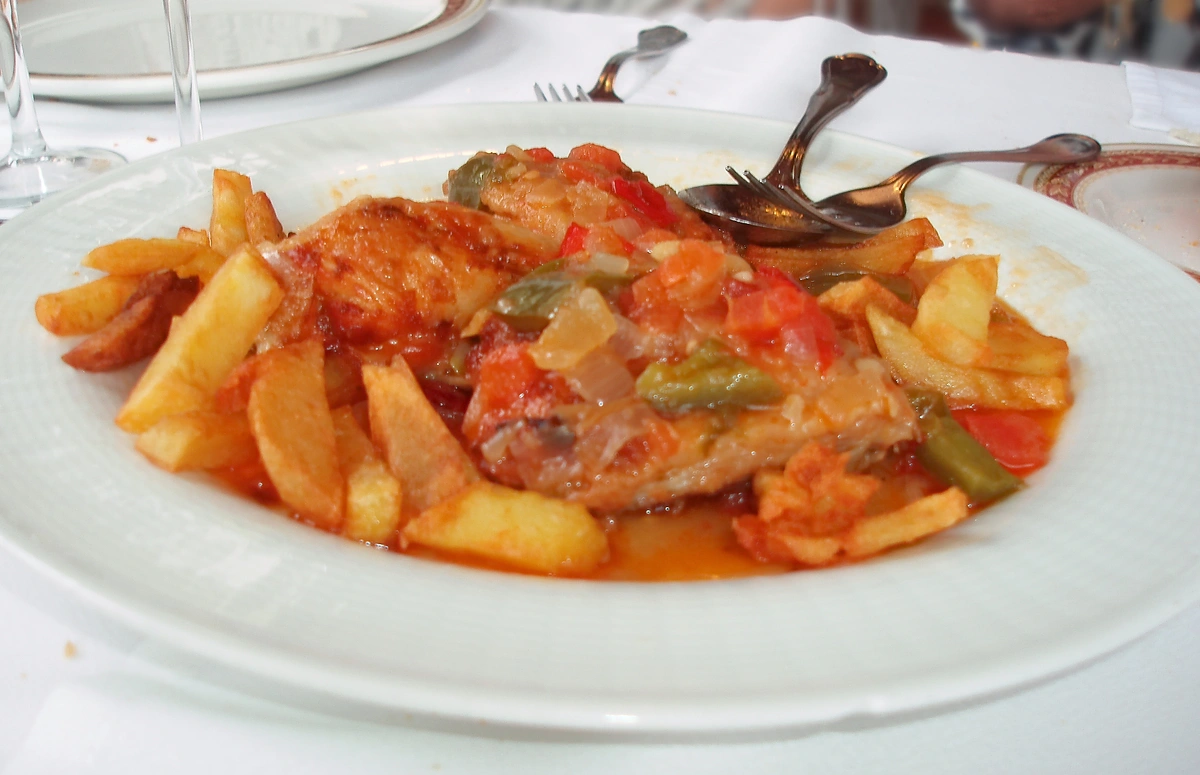Have a question?


Updated September 19, 2023
With more than 3,500 miles of coastline, tens of islands, 17 regions, and a population of close to 50 million people who speak five unique languages, it should go without saying that there are countless possibilities of things to do in Spain: from lounging on beaches to indulging in incredible food to exploring architectural wonders. That’s why—with some help from locals—we’ve created this list of 20 things to do in Spain.

While in Spain you’re going to want to eat as many tapas—bite-sized samples of Spanish cuisine—as humanly possible. You'll find tapas throughout the country, but Madrid is one of the best places to fill up!
Locals note that it’s hard to find a more Spanish experience than going out for tapas. You can bar hop from place to place, snacking on delicious bites that are served with each beverage you order, and enjoy swigs of sangria until the sun comes up.
If Madrid is not on your itinerary, try Bilbao and San Sebastian where tapas are known as pintxos and are impossible to avoid and easy to fall in love with.
Local tip: Plaza Mayor, Madrid’s main square, is surrounded by some of the best bars in Madrid (as is the entire Sol neighborhood).

For a lively night that you’ll never forget, catch a Flamenco show in Seville. The capital of Spain’s Andalusia region, Seville is the place to enjoy this dynamic art form.
Featuring song, dance, and guitar, Flamenco developed over the centuries from the songs of Roma immigrants who made their way to Spain from northwest India. You’ll find tons of places in Seville with awesome, authentic flamenco, like the oh-so-cool Casa del Flamenco. If you want to fit in with the locals, don’t forget to yell “ole!” at the end of each set.
You can also catch an amazing Flamenco show at Corral de la Moreria in Madrid.

Barcelona’s Parque Güell, designed by iconic architect Antoni Gaudi, is packed with amazing gardens, vividly colorful buildings, and giant lizards guarding brilliant fountains. This 100-year-old UNESCO World Heritage Site is a local favorite and a totally unique attraction not only for Spain but for the entire world.
The park is big and to see it all you’ll find yourself walking a fair bit. It’s a good idea to get an early start to beat the crowds and the heat as well as to make sure you’re not rushed for time. Wear comfy shoes, bring water, and enjoy!
Local tip: When you buy a ticket for Park Güell, you get an admission time. If you miss that time by more than 30 minutes, you will not be allowed entry.

One of the most fascinating pieces of architecture in Spain’s southern region of Andalusia is the 10th-century Mezquita de Córdoba: aka the Mosque-Cathedral of Córdoba.
Originally built as the city’s main mosque under Moorish rule, this UNESCO World Heritage Site became a cathedral after the Catholic Reconquista. Its 850 Moorish pillars—topped with candy-cane-striped double arches and later Gothic additions—will make you feel like you're wandering in a stunning forest with layers of history. This symbol of the Islamic grandeur of Al-Andalus is beautiful and a total delight to explore.
While you’ll need a ticket to visit as a group no matter what, if you’re an individual you can actually enter on your own for free from 8:30-9:30 AM every morning.
Local tip: If you climb to the top of the bell tower, you’ll get a fabulous view of the city of Córdoba.

Spain has a tradition of unique, exciting festivals, and you’ll find them all over the country year-round. Locals say that these are a few of the best and liveliest festivals held each year:

You won’t find huge crowds in the medieval town of Cáceres. This off-the-beaten-path frontier town in the Extremadura region hugs the border with Portugal and has an amazing story to tell.
The Old Town’s unique architecture has Roman, Islamic, and Italian influences; all of it is a relic of the many cultures who’ve called Cáceres home over the centuries. It’s hard not to be awed by the walled city’s archways, palaces, and towers.
Cáceres was also the site of many battles between the Moors and Christians during the Reconquista. And more recently it was the site of a different type of history being made: Cáceres is where many of the King’s Landing scenes in Game of Thrones were shot.

It’s basically impossible to think that all paella isn’t delicious, but the paella in Valencia is next-level, out-of-this-world, amazing. Unsurprisingly, Valencia is actually where paella comes from!
Locals suggest ordering paella Valenciana to get a taste of the classic version of the dish. Made with different meats like chicken, rabbit, or duck, and mixed with beans and sometimes snails, it’s a sensation for the senses you won’t soon forget.
No one knows paella like someone from Valencia, so be sure to ask a Valencian local for their favorite spots.

How would you like to have a meal where Goya was rumored to have washed dishes when he was young? That’s how old Botin is. It was established in 1725 on Madrid’s Calle Cava Baja and holds the Guinness World Record for the oldest restaurant in the world. It’s the delicious food that’s kept Botín in business for nearly 400 years. Try their signature dish: whole suckling pig stuffed with aromatics, doused with white wine, and then crisped in a wood-burning oven
Local tip: Ernest Hemingway invoked the restaurant in some of his most famous works: The Sun Also Rises and Death in the Afternoon. He also often mentioned Botin's roast pig in his fiction.

The Camino de Santiago pilgrimage route follows in the footsteps of the Apostle St. James. While there are now seven well-established Camino routes, some of which stretch as far as France and Portugal, the original route is believed to have been from Oviedo. Regardless, every route today ends at the tomb of St. James (Santiago in Spanish) at the Cathedral of Santiago de Compostela.
Whether you hike one of the many majestic trails that crisscross Northern Spain or just visit the town of Santiago de Compostela for the day, this amazing journey may just be one of the best experiences of your life—regardless of whether you are religious or not.

If you’ve ever seen the Walt Disney Concert Hall in Los Angeles or the Museum of Pop Culture in Seattle, then you’ll recognize Frank Gehry’s architectural genius when you see it at the stunning Guggenheim Museum Bilbao.
The beauty of the sleek, angled, silver building is second only to the amazing collection of modern and contemporary art masterpieces it contains within its walls. The museum is especially beautiful when you see it reflected off of Bilbao’s sweeping waterfront.

Another one of Gaudí’s works that takes center stage in Barcelona is La Sagrada Familia, the iconic basilica that’s been under construction since the late 1800s. (But that doesn’t mean it hasn’t remained one of the places you must visit in Spain!) This fantasy world of stunning stained glass, “melting” columns, and mind-bending designs echoes Gaudí’s notion that the divine and the natural are inseparable.
This breathtaking Roman Catholic church is scheduled to become the tallest sacred site in Europe once it’s done, which is currently scheduled to be in 2026 and has been a long time coming. But at this rate, we’ll believe it when we see it!
Local tip: Use caution in crowded places like La Sagrada Familia that draw tourists. Barcelona is safe but beware of pickpockets.

A trip to the hills of Granada will remind you of the impact that the Moors had in Iberia for 700 years. One of the most visible remnants of the Islamic influence on the Iberian Peninsula is the Alhambra Moorish fortress, a must-visit while in Spain.
This palace and fortress complex protected the city's inhabitants from invasion by the Christians during the last of the Muslim dynasties in Spain. You’ll feel like you’ve traveled back in time as you stroll through the Alhambra’s horseshoe-arched courtyards, beautiful gardens, and stunning arabesques.

Just a short drive from Madrid is Toledo, a unique city where diverse cultures have historically lived in harmony. One of the best ways to learn about the storied multicultural history of Toledo is to wander through its historic walled neighborhoods, home to monuments from Jewish, Muslim, and Christian cultures.
One of the more fascinating parts of Toledo is the old Jewish quarter, with its narrow cobblestone streets and synagogues–one of which is possibly (it’s a contested fact) the oldest synagogue still standing in Europe.
Local tip: Toledo is also famous for making the best swords and shields on the planet, so stop by a steelsmith and check out their wares.

There’s no arguing that Spanish wines are among the best in the world, and the region of La Rioja is internationally known for vineyards that turn out some of the most sought-after bottles on the market.
If you head to the town of Haro (home of the world’s biggest wine fight—La Batalla del Vino–mentioned above) locals suggest taking a tour of Bodegas Muga. Bodegas Muga is not only a top-shelf winery but it is also one of the few wineries that still makes their own barrels.
Not going to make it to La Rioja? Check out the cava in Penedès instead.

There’s much more to Ibiza than A-list celebs, glitz, and glam. Spend your days at the jaw-dropping beaches and take a tour of stunning whitewashed villages in Ibiza’s quiet rural interior.
Locals tell us that nature lovers will have a field day at Ses Salines, a huge wetland escape on the island’s southern coast. They suggest skipping the fancy overcrowded hotels and checking out the agroturismos—traditional farmhouses turned into stylish rural hotels. There, the pace of life is slower and meals are homemade.
Local tip: Visit in October, when the summer crowds have left. Hotel prices are cheaper and you might even get the beach to yourself.

You won’t find more passionate sports fans anywhere in the world than the Spanish—and their sport of choice is, of course, fútbol (soccer). The two biggest clubs in Spanish soccer are FC Barcelona and Real Madrid and they play their home matches at two of the most famed venues in Europe: Camp Nou and Estadio Santiago Bernabeu.
If you want to learn about the history of these iconic Spanish teams, both stadiums offer tours and have museums that pay tribute to their glorious histories.
But we agree with our locals in Spain. The best way to experience this slice of Spanish culture is by throwing on a jersey and catching a game.

The Prado (Museo Nacional del Prado) is the official national museum of Spain and home to the Spanish royal collection. In the Prado’s permanent collection are thousands of works of art by hundreds of artists including Bosch, Titian, El Greco, Rubens, Velázquez, and Goya.
Some of the most famous paintings in Prado’s permanent collection are Velázquez’s Las Meninas and the Garden of Earthly Delights by Bosch.
The Prado is in central Madrid and visits are ticketed at a cost, but you can also enter during some specific free access hours.
If you’re not headed to Madrid on your trip to Spain, you could also check out the Picasso Museum in Malaga or the Dalí Museum in Figueres so as not to miss the opportunity to see world-famous art in person.

The Alcazar is an expansive property centered around the stunning palace and full of lush gardens–it’s definitely one of the spots that should be high on your list of places to visit in Spain! Originally a Muslim fortress, the Royal Palace that stands today was built over top of the original structure in the 1300s for the Christian king Pater of Castile.
Visiting the Alcazar is a great day (or half day) out in Seville, but to make sure you get the most out of it and aren’t just standing around in a ticket line in the sun, book online in advance and get straight to exploring the magnificent palace and the gardens surrounding it, which have been growing for more than a thousand years. Or, head over on a Monday when entrance is free.

Paella in Valencia, tapas in Madrid, and pintxos in San Sebastian are all great gastronomical experiences. But there is so, so much more exceptional Spanish cuisine to be sampled and enjoyed. Some other highlights across a few of the country’s 17 regions are:

Ibiza is a great getaway with plenty of beaches to choose from, but with thousands of miles of coastline and plenty of other islands dotting the waters, it’s far from your only option in Spain for stunning stretches of sand or crashing waves.
The Mediterranean coastline provides calmer seas and warmer waters while the Atlantic coast offers a more wild and rugged ocean vibe.
Check out some of the best beaches across the entirety of the country, no matter which beach scene sounds ideal to you:
If you’re a total beach bum, try and see how many unique beaches you can fit onto your perfect Spain itinerary, just don’t forget the sunscreen.

How should we contact you?
Call
Thank you! We'll get back to you as soon as possible!
Click to register and track your question!
If you would like to follow up with us:
+1 (855) 782-3006